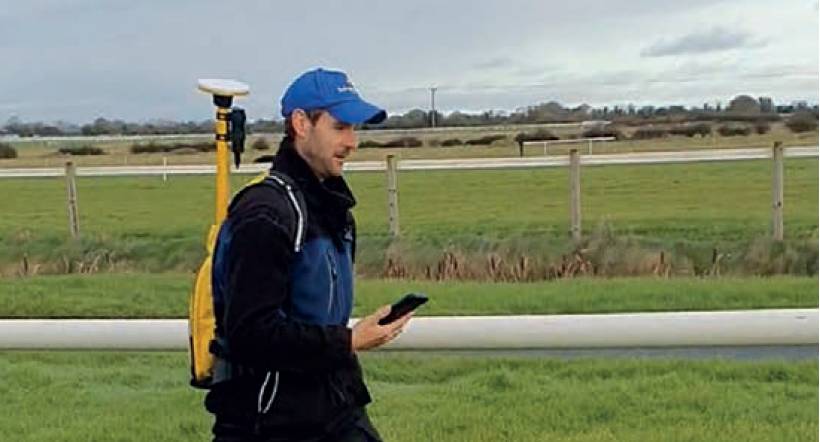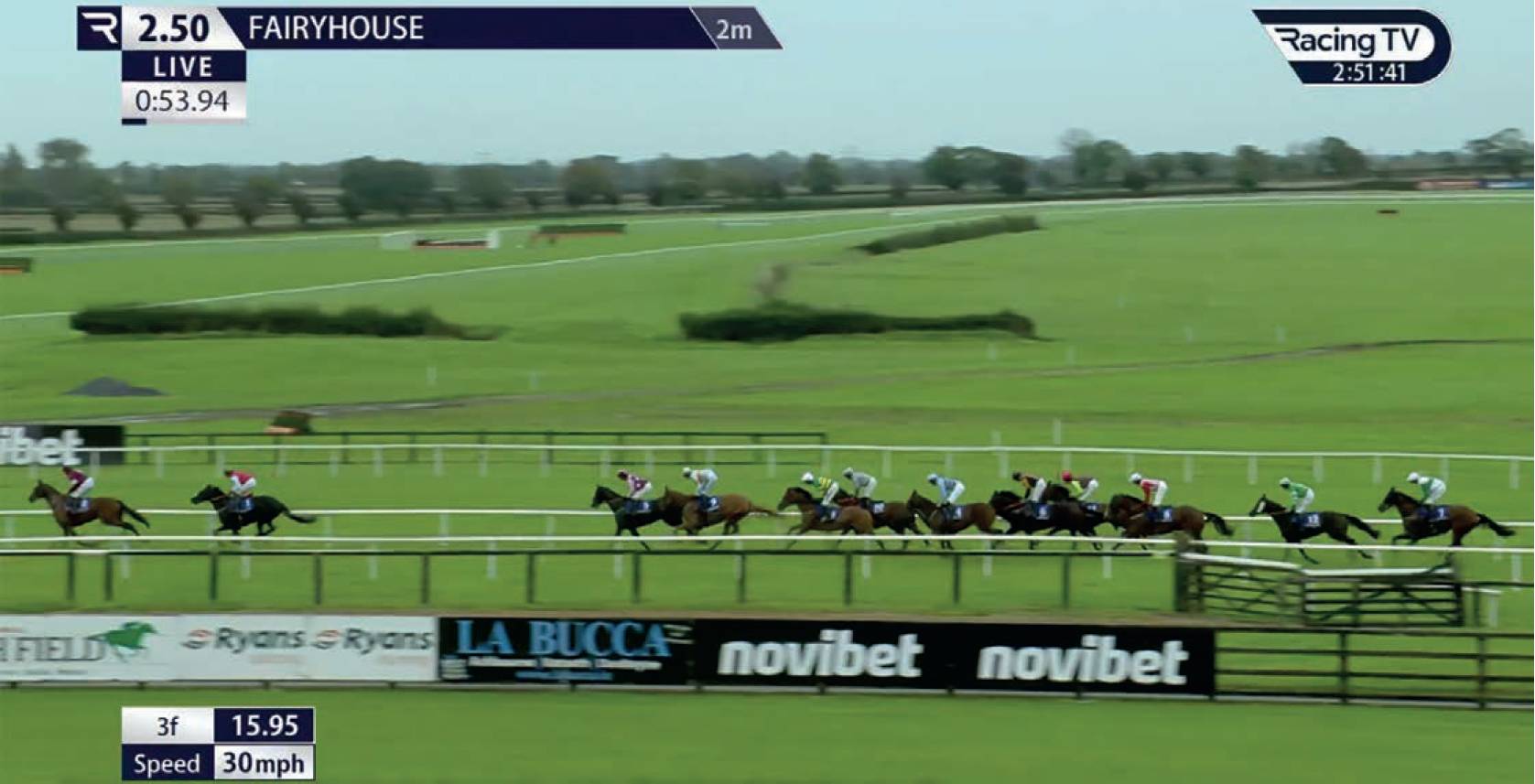Fairyhouse Racecourse clears timing hurdle
Lucy Hamilton, KOREC Group

Track foreman, Richard Stapleton measuring the circuit.
THERE have been longstanding concerns about the accuracy of sectional times in Irish horse race meetings, particularly following some high-pro file queries on race distances. However, Irish racing is addressing the problem, and leading the way is Fairyhouse Racecourse – one of the country’s premier horse racing venues and home of the Irish Grand National.
In the world of horse racing, where comparisons related to pace, ground conditions and distance are paramount for form-study, the accuracy of furlong distance measurement is of utmost importance. Equally crucial is ensuring that the furlong measurements align with the timings displayed on television broadcasts.
Fairyhouse, aware of the racing industry’s increasing demand for precise data, numbers and information for assessing a horse’s form correctly, wanted to find a new survey method to achieve this. It could no longer rely on traditional survey methods, such as measuring wheels, as they had proven inadequate in delivering accurate furlong measurements to the extent that there had been races where all seven runners appeared to break the track record.
Taking a proactive approach, Fairyhouse addressed this issue with the adoption of a centimetre accurate Trimble Catalyst GPS system that it customised for the production of maps of every course circuit for each of its 21 annual meetings. It saw subsequent checks of the track reveal that the race had been run over a shorter distance than initially advertised.
Compared to the new survey level GPS there had been discrepancies as high as 32m over an eight-furlong race. It means the solution has been rigorously tested and implemented by the client at Fairyhouse, with approval secured from the Irish Horseracing Regulatory Board (IHRB), as well as CourseTrack who are tasked with introducing sectional timing by the beginning of 2024.
There have been longstanding concerns about the accuracy of sectional times in Irish horse race meetings, particularly following some high-profile queries on race distances. As the first racecourse to independently look at the technology that could assist with accurate furlong measurement for sectional timing data, the client was keen to implement a system that not only worked, but could be easily usable by other racecourses. It needed to be easy to use, especially for courses where staff were less technical; reliable; and affordable.
While the survey industry offers many centimetre accurate GPS systems, these tend to be designed for professional surveyors. Whereas the model that was chosen has been developed for those who wish to pay only when they use the system. This was ideal for the Fairyhouse course because it only required centimetre accurate positions to supplement the primary area of work rather than all day, everyday. It used it in hourly bundles, giving sufficient time to measure the course circuit at a brisk pace.
The hardware itself comprises of a lightweight Trimble DA2 GNSS receiver, which offers survey-level positioning, connected to an Android or iOS device. Alongside an Android phablet, the field software runs on KOREC’s K-MATIC suite, which includes K-CAPTURE field software with the use of KLEARVIEW360, a cloud-based portal for analysing, viewing and sharing the collected information.

Above: Typical on-screen information generated by CourseTrack from captured GPS system data. Left: the course track at Fairyhouse in Ireland.

Ease of use and understandable was also a top priority. It needed to be able to use with a single days training, as some courses would only use it four times a year. Working with KOREC, a stripped-back data entry form was developed, one that was based exactly on the information that the UK media company requirements. This included the auto recording of the race line and the ability to stop and mark each furlong and then continue the measurement of the race line.
Although the system is light and portable over long distances, using a backpack to carry it allowed for the positioning of furlong markers. In preparation for races, the rail has to be positioned as early as possible, measuring one metre out from the rail. When races are run over three days, such as the Easter Festival, the course can be marked out for six race lines. It has to be completed in plenty of time to supply the information to CourseTrack in England.
For each circuit, vital reference points on the track are established to allow accurate positioning of the start and finish lines. Once the data is collected, it is downloaded onto the portal for a visual check of the map and to ensure that all furlong markers and bends are correct. It is then emailed to all those who require the course information. On race days the information is used by CourseTrack to link up with trackers that each horse carried in its saddle cloth to provide accurate timing data.
The aim for Fairyhouse was to be 100% accurate and it now is. Plans to customise the system further will see it add in fences and distances to create some visuals for social media. Several Irish courses have now begun to adopt the method.
Lucy Hamilton, KOREC Group